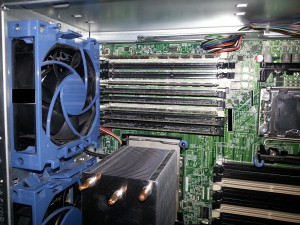For an average user who knows nothing about electronics technology, a simple RAM (Random Access Memory) upgrade can be a complicated task. The reality is even for a tech savvy person like myself find it difficult to find spare RAM modules and specific instructions for installation.
Key points…
- Do you have physical access to the memory? (some laptops, the RAM is under the keyboard and only a qualified technician can install/replace RAM)
- What is the type of RAM your desktop/laptop can take? (DDR2, DDR3, DDR4, etc)
- What is the memory frequency? (1333 MHz, 1600 MHz, 1066 MHz, 800 MHz, etc)
- The type of support for the RAM? (ECC, DIMM, un-buffered, un/registered etc)
- What is the maximum amount of RAM allowed by a slot/the motherboard? (if possible, find the motherboard’s model number) (4 GB/8 GB/12 GB)
- How many RAM slots available and how many are in use?
- What is the configuration of the RAM slots? (single/dual/triple channel or mixture)

Handle any electronic items with exposed printed circuit board with caution. Computer RAM is highly sensitive to electrostatic discharge. Ground yourself properly before opening the stick packages.

For example…
I recently upgraded my ProLiant ML350 G6 server memory. I had no idea it what type of RAM came with the unit. So I downloaded the maintance manual from HP website. However, I learned there were two versions of Intel motherboards comes with ML350 G6. So I ran a HP Hardware Tool (a software that detects types of hardware installed/supported), which provide me with details such as, the RAM is DDR3-1333MHz, ECC, and Registered. I also learned the current RAM was made by Micron Technology.
However that’s wasn’t enough! I had to read the manual (you can also get this info by opening the panel for your box and checking the colour coded slots) to find how many of the slots are dual and how many of them are single. To my surprise I found 3 single and 3 double per processor.

Therefore I upgraded the RAM with 5 sticks (2×2 in a two kits + 1) of ECC Registered DDR3 to increase the RAM to 14 GB.

Keep in mind that you cannot mix ECC memory with other types of memory.
While it will work, it is not recommended to use different capacities of memory sticks. Your maximum speed of the computer is depend on the slowest part of the system. (Eg, 4 GB stick and 2 GB stick will provide you with 4 GB of memory, NOT 6 GB of memory)
When triple/dual channel slots are available, buy memory kits. Do not buy them individually because they work together when you buy them in kids of 3 or 2.
Try not to mix the manufacture of the memory modules. While it may not cause any issues, it will reduce the possibility of a bit failure.
If your motherboard support both ECC and non-ECC memory, it is cheaper to buy non-ECC memory (it is faster too). However, if you are looking for long term reliability and up-time(such as a server), you should get Registered ECC modules.
